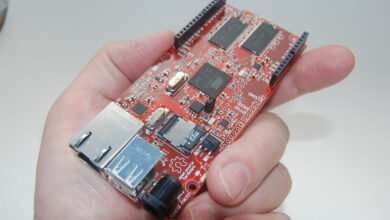What Is Application Integration?

Application integration is the process of combining different software applications so they can share data and work together. Businesses can automate processes, improve efficiency, and make better decisions by integrating applications. Keep reading to learn more about application integration and how it can benefit your business.
What is application integration?
If you have ever thought, “what is application integration?” we are here to help you. Application Integration is the process of linking together two or more software applications to allow them to share data and processes. This can be done in various ways, depending on the needs of the business. Integrating multiple applications will enable companies to streamline their workflows and improve efficiency.
It also allows them to access data from multiple sources and create a single, unified view of the big data. This can be useful for businesses that need to make strategic decisions based on accurate information from all parts of their operation. Application integration can also help companies to become more agile and responsive to changes in the market. By quickly integrating new applications into their existing infrastructure, they can soon take advantage of new opportunities or respond to threats.
What are the challenges of application integration?
The challenges of application integration include:
- Ensuring that the different systems can communicate with each other correctly. This may require configuring the methods to use a common language and developing adapters or connectors to allow them to exchange data.
- Ensuring that the data in the different systems are consistent and accurate. This may require mapping the fields in one system to the corresponding areas in another system and implementing checks and validations to ensure that the data is correct.
- Managing the synchronization of data between the different systems. This may involve setting up rules or triggers to automatically update the data in one system when it changes in another system or manually synchronizing data as needed.
- Coordinating business processes between different systems. This may require designing workflows that will execute when certain events occur (such as creating a new customer record) and configuring the methods to use compatible processing engines.
What are some of the best practices for application integrations?
Application integration is the process of linking together two or more applications. So that they can share data and work together. Standard integration methods include using an application programming interface (API) to connect the applications, installing a middleware layer, or using cloud-based services.
An API, or application programming interface, is a set of programming instructions. The protocols that allow software components to communicate with each other. An API can be used to create a bridge between two otherwise disparate systems. Or to provide a more user-friendly interface for a complex process. Middleware is a type of software that sits between applications. The operating system, provides services such as security, networking, and communication. It can use to improve an application’s performance or reliability or add new functionality. There are many different types of middleware, and they can deploy in various ways.
Cloud-based services are becoming more and more popular as time goes on. This is because they offer many advantages that other types of services don’t. For example, cloud-based services are straightforward to use. You can access them from anywhere globally, and all you need is an internet connection. They are also very affordable, and you can usually get a lot of features for a meager price.
Additionally, cloud-based services are very reliable. They are always up and running, and you never have to worry about them going down. This is because they are hosting in the cloud, a very reliable and stable environment.
Read More: All you want to be familiar with Integration


